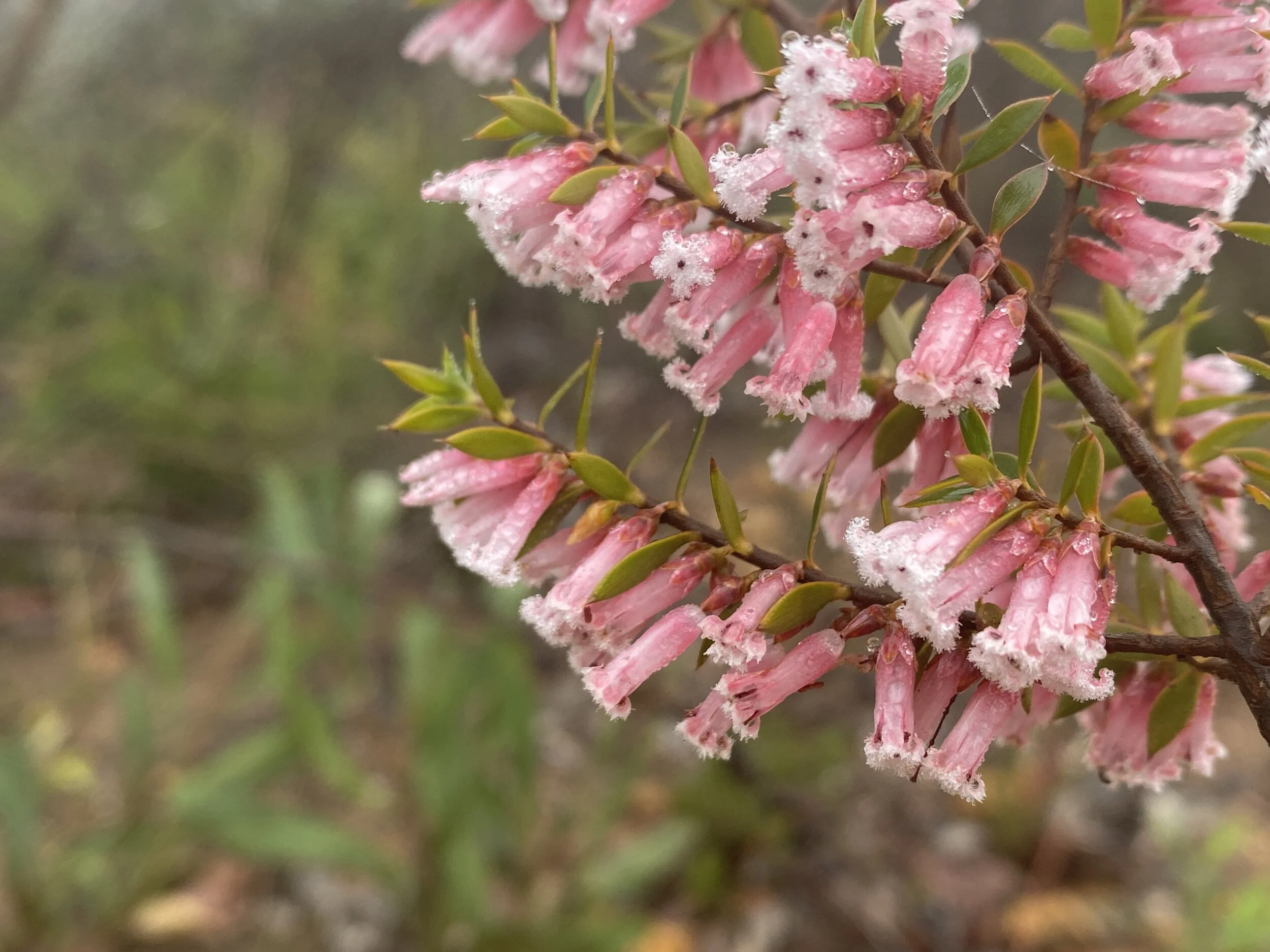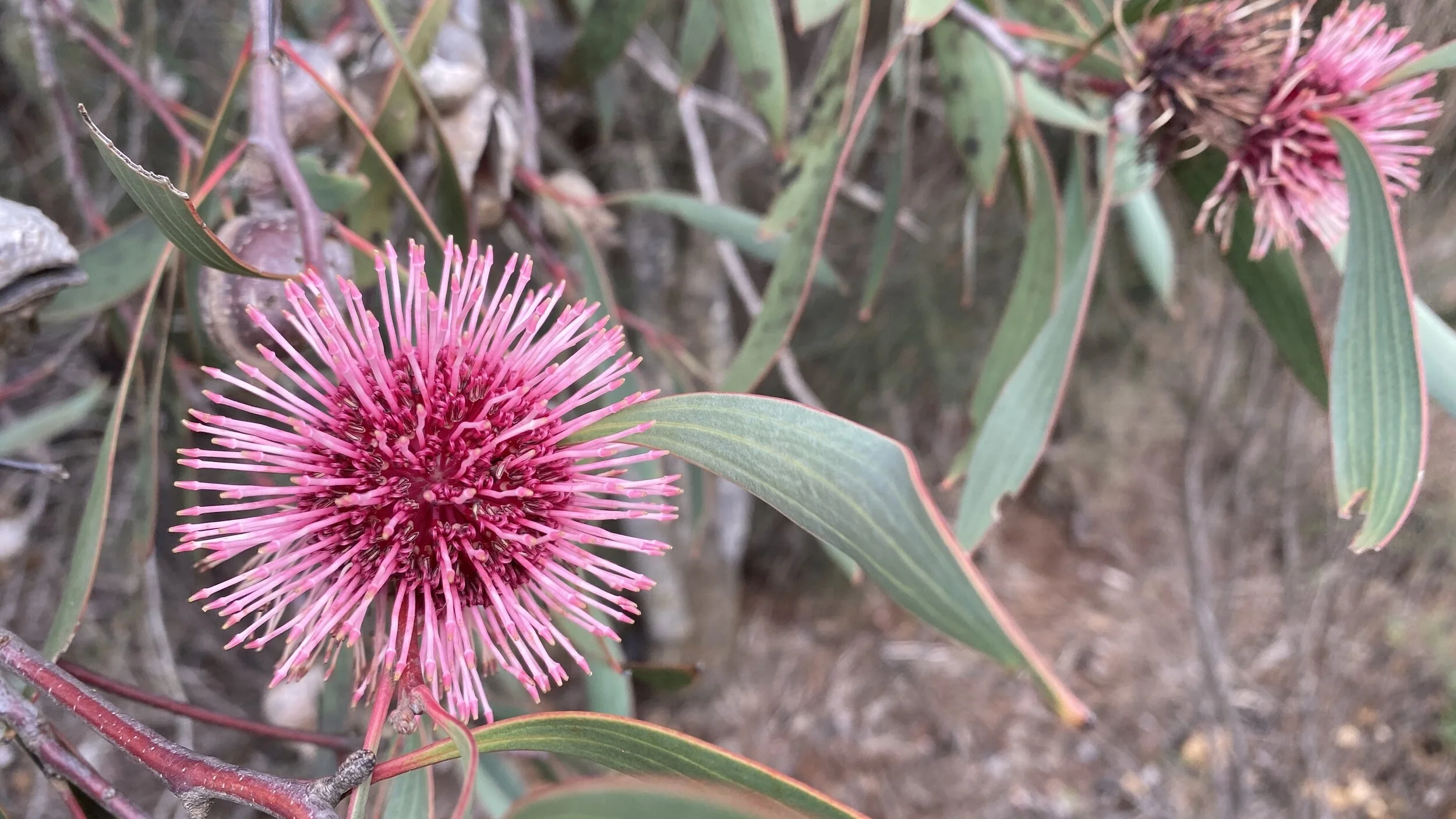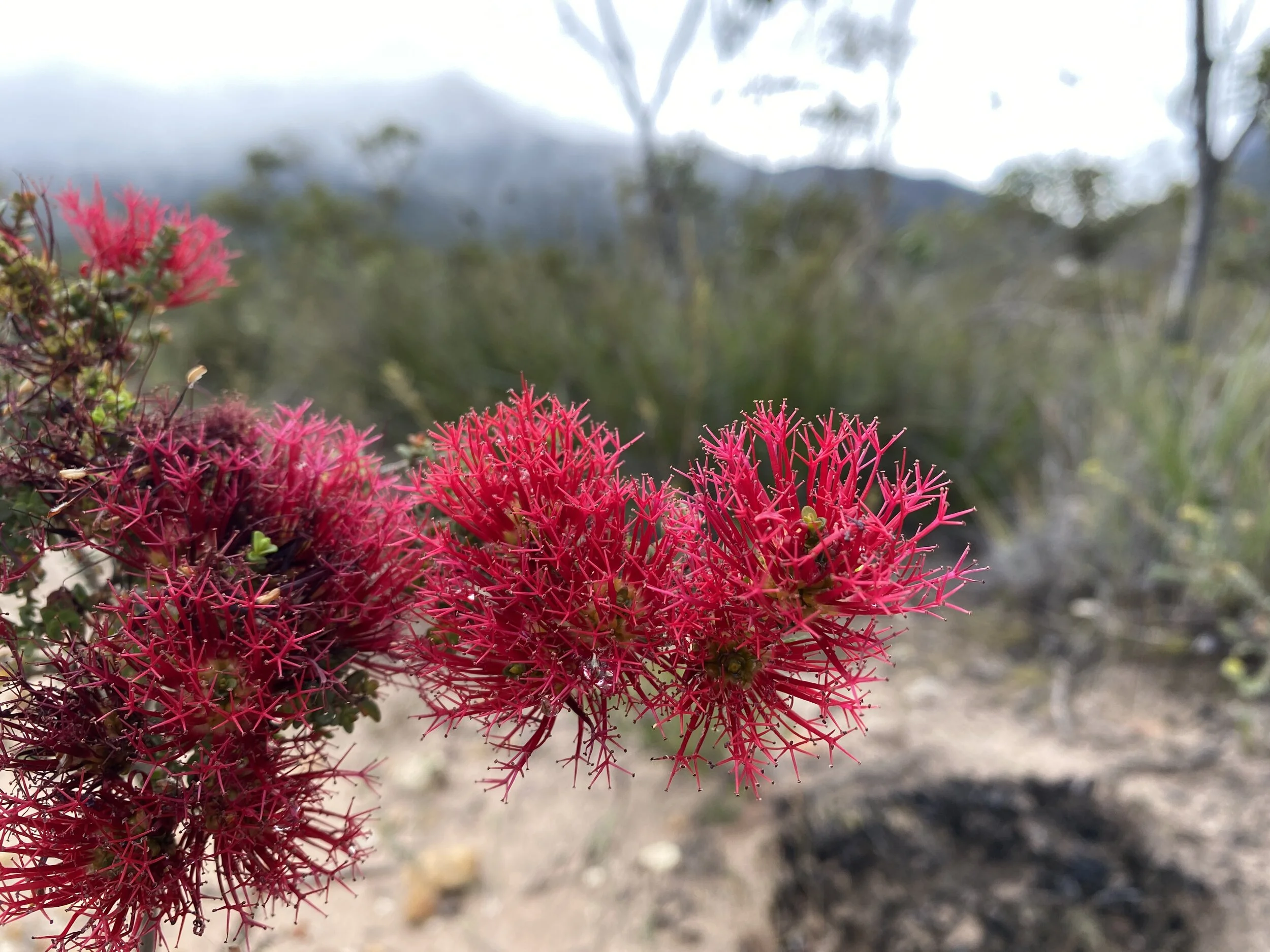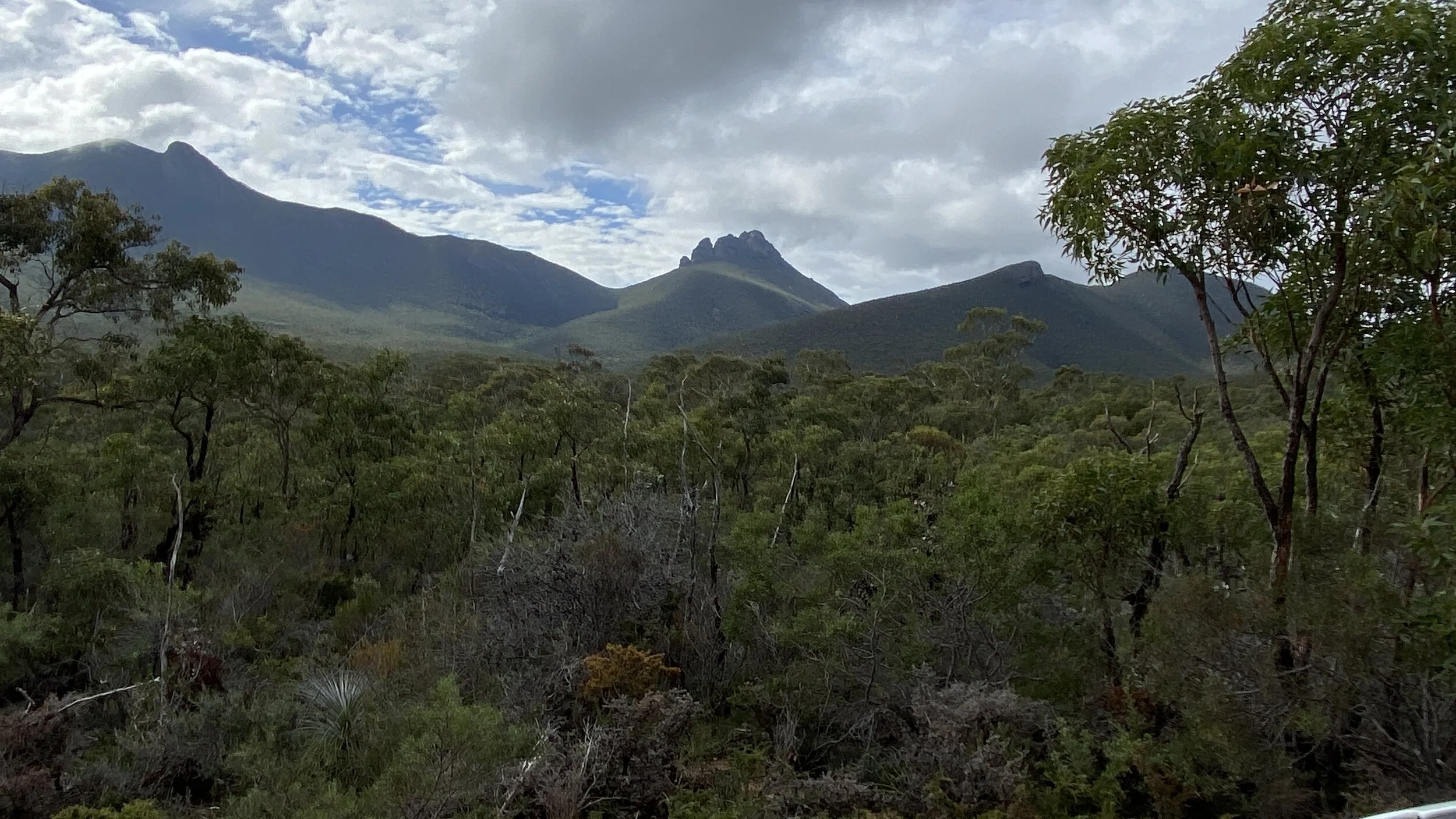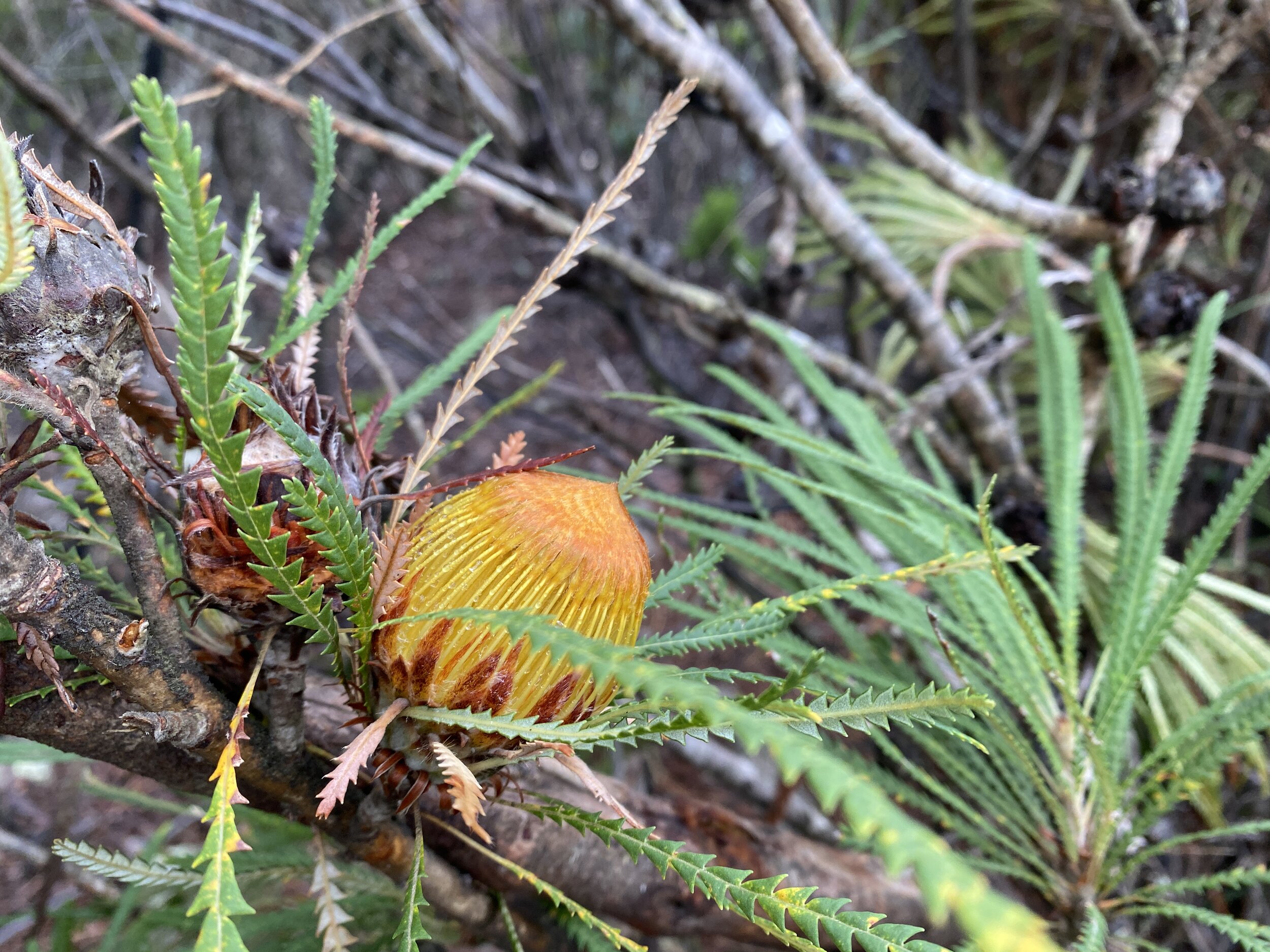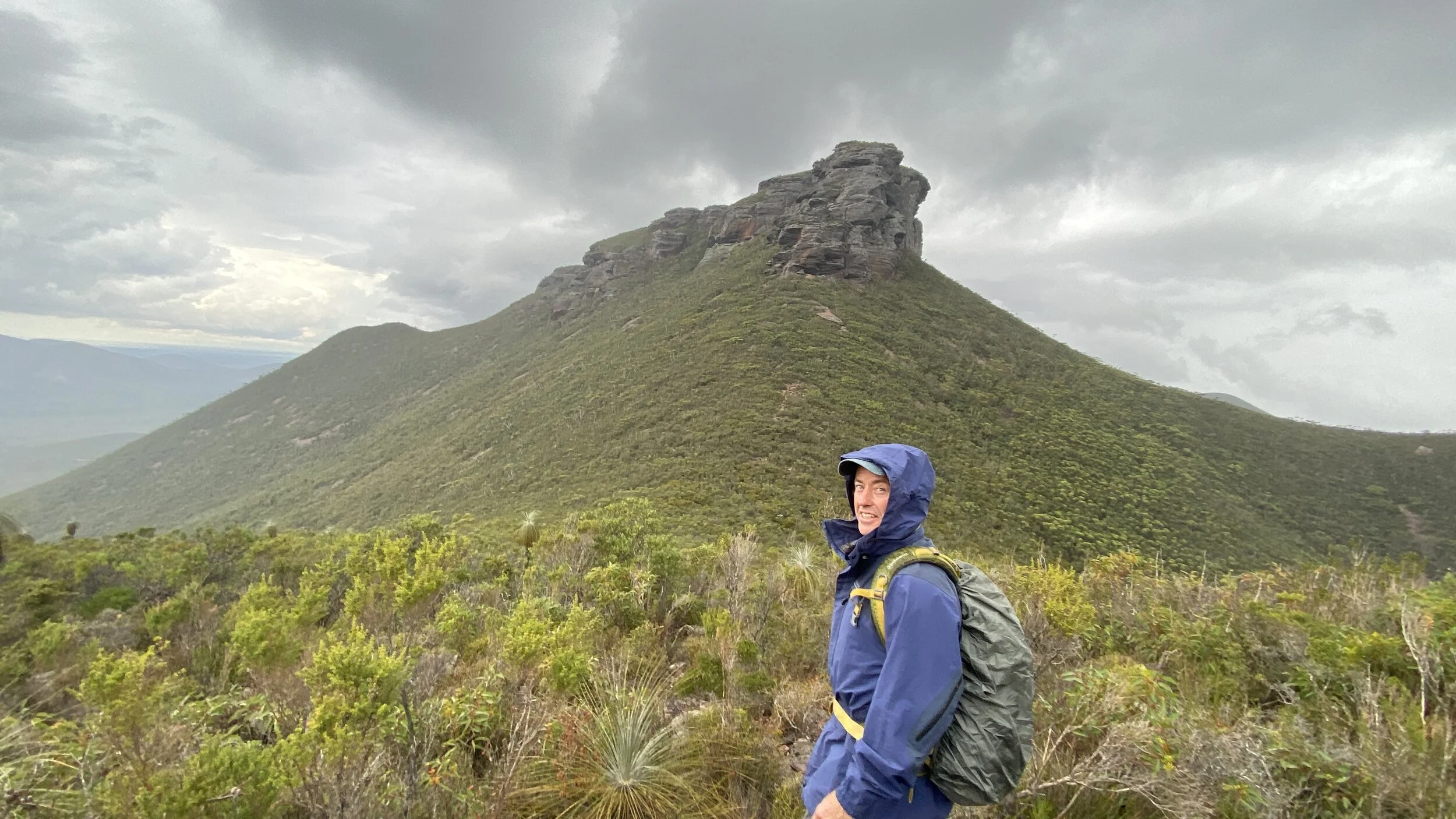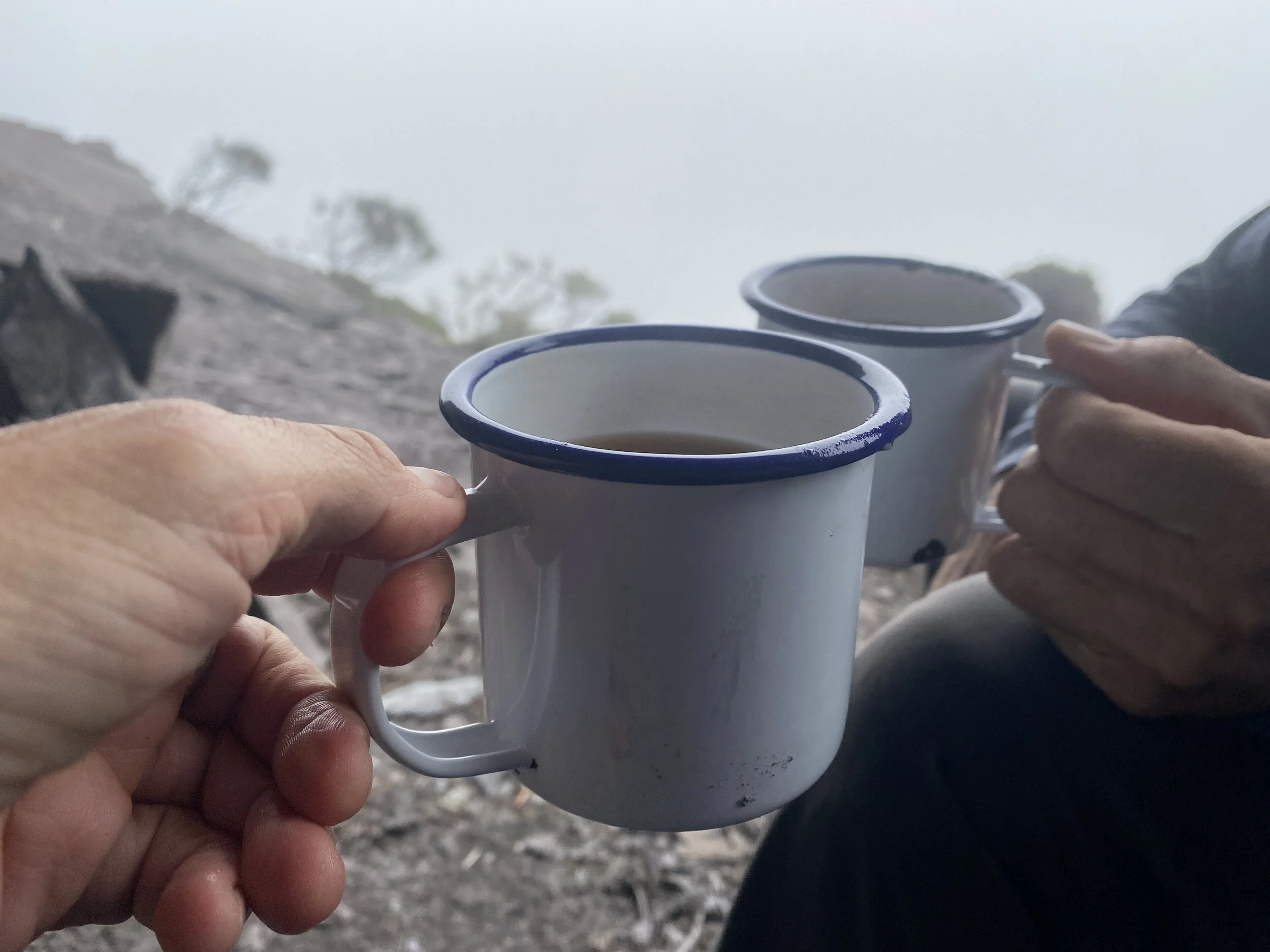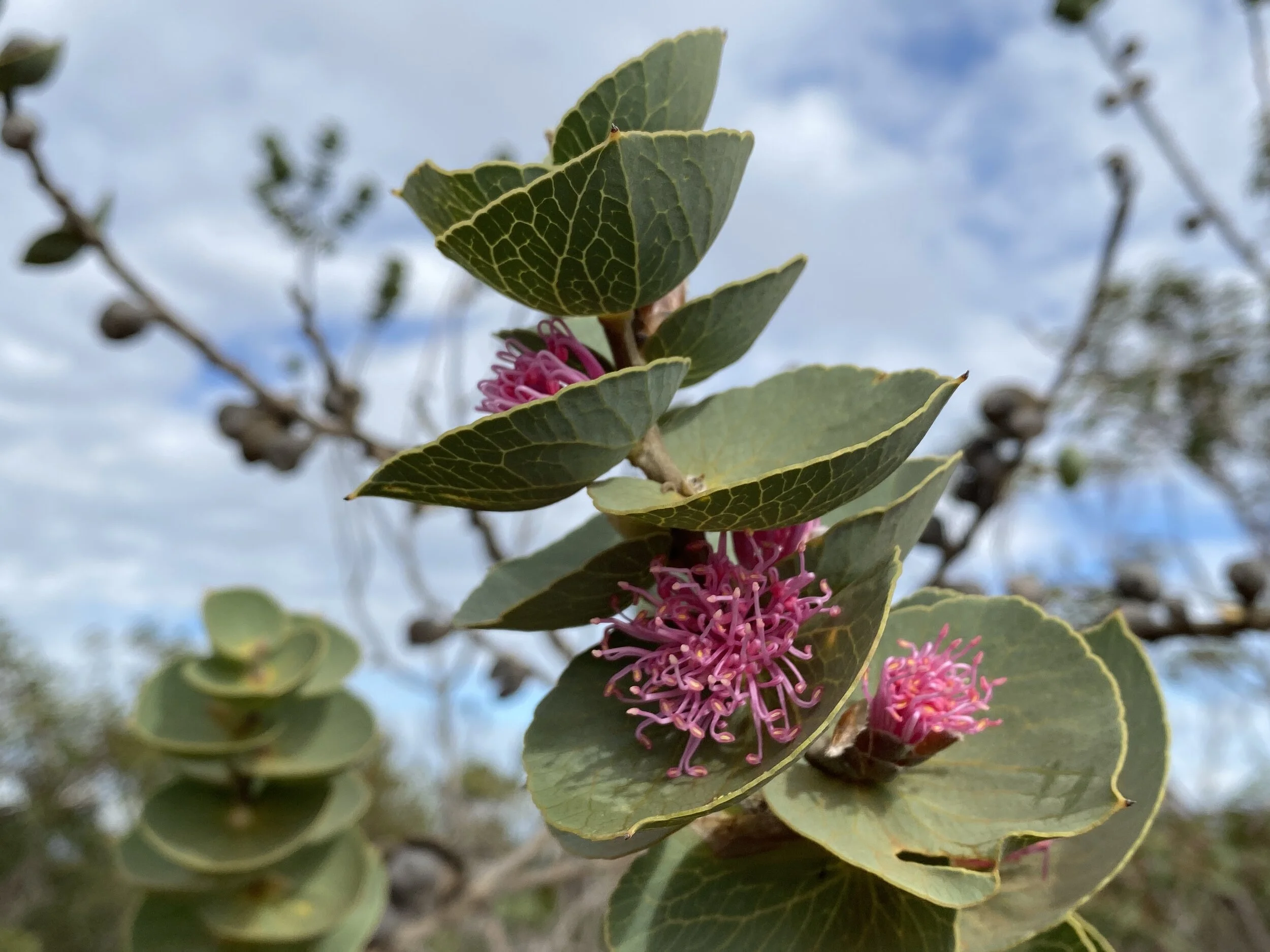Peaks, Wildflowers & Fascination in the Stirling Range National Park
The Stirling Range National Park is one of Western Australia’s most visited national parks and has been called a ‘coral reef out of water’ for its great floral diversity and environmental value.
Early in May (autumn in the southern hemisphere) we took a much-needed, unstructured day off and travelled the 5 hours south of Perth to hike Mt Magog and Talyuberlup, two of the more demanding peaks in the park.
From the very moment we turned onto Stirling Range Drive to access the trailhead, bright and glistening blooms covered in the morning dew and soft rain adorned the way.
On the trail too, which starts with a gentle slope and steadily becomes more demanding, an abundance of flowering plants lined the path.
Fascinated by the fabulous view of Mt Magog and Talyuberlup we hiked up its craggy & slippery granite footholds and muddy slopes, captivated by the floral natives that lit up the path all the way up to the increasingly challenging peak. Acacias, hakeas, banksias, bottlebrushes endemic to the area and a scattering of Kingia australis visible throughout, to name just a few of the more prominent plants.
The day was damp and the trail was challenging. We made our way over the densely vegetated ridge on the less travelled trail from Magog to Talyuberlup and by the time we had hiked all the way there and back, and down to the car, we were exhausted and wet but filled with a deep sense of wellbeing.
Sure, physical exercise results in a myriad of physical and mental benefits – our bodies have evolved for physical activity, but much of the feeling of wellbeing may well be due to the beauty we were immersed in.
When we fascinate, it was discovered in 1890 by American psychologist William James, we switch on the parasympathetic system and help the brain regenerate mental energy.
Fascination may be why natural organisms and environments can engender such a feeling of wellness and peace. Fascination, regenerates mental energy and although the body might be tired from the physical exertion, the mind is calm and fresh and more aware of its surroundings.
Below are some of the spectacular plants we saw along the way.
The first bright yellow & orange flower is a Hibbertia selkii. I was delighted to see this beautiful species of the Hibbertia genus just casually brightening up the side of Stirling Range Drive, it’s a priority 2 listed species, which means that we don’t really know too much about this species because there are less than 5 locations where it is found. It means that the species needs to be studied more but is possibly going to be labelled threatened.
In the middle is Hakea cucullata, or Scalloped Hakea - a pretty plated offering of curly pink tassels. This is quite a tall plant, a couple of metres or more, sometimes leaning right out from the edge of the road.
Next to it is another hakea, Hakea lissocarpha, also called Honey Bush, and is widely spread around Western Australia from Geraldton to Esperance, its flowers creamy with pink hues.
Hakeas are endemic to Australia – most are found in WA - and were traditionally used as a source of food by Noongars for their sweet nectar – sometimes they sucked it straight from the plant, sometimes the flowers were soaked in water. The fruit of some hakeas, which is woody and hard was also roasted until the seeds popped out and were eaten like nuts.
There are so many species of flowers in the Stirling Ranges - 1500 to be exact and many only found here, as in nowhere else on the planet. Like this one: Darwinia hyperifolia. There is always something to fascinate about.
Here’s a short video of our exhilirating day!


